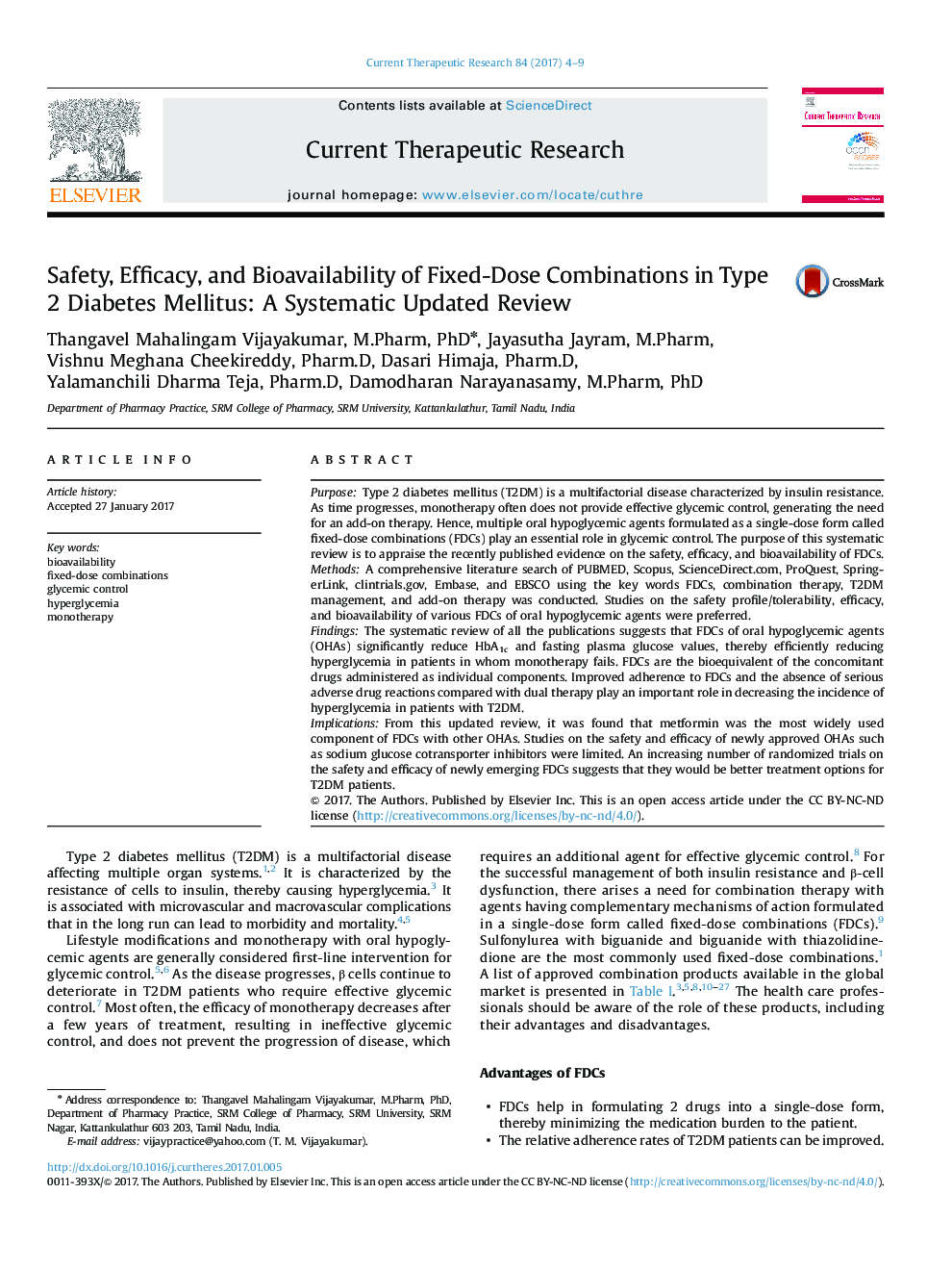| کد مقاله | کد نشریه | سال انتشار | مقاله انگلیسی | نسخه تمام متن |
|---|---|---|---|---|
| 5723133 | 1608965 | 2017 | 6 صفحه PDF | دانلود رایگان |
- Comprehensive analysis of current fixed-dose combinations used in the treatment of type 2 diabetes mellitus
- Most widely used component of fixed-dose combinations is metformin with other oral hypoglycemic agents (eg, like glimepiride, pioglitazone, rosiglitazone, acarbose, and sitagliptin.
- Fixed-dose combinations help to reduce hyperglycemia efficiently; the long-term complication of diabetes could be minimized in these patients, thereby improving the quality of life of patients.
PurposeType 2 diabetes mellitus (T2DM) is a multifactorial disease characterized by insulin resistance. As time progresses, monotherapy often does not provide effective glycemic control, generating the need for an add-on therapy. Hence, multiple oral hypoglycemic agents formulated as a single-dose form called fixed-dose combinations (FDCs) play an essential role in glycemic control. The purpose of this systematic review is to appraise the recently published evidence on the safety, efficacy, and bioavailability of FDCs.MethodsA comprehensive literature search of PUBMED, Scopus, ScienceDirect.com, ProQuest, SpringerLink, clintrials.gov, Embase, and EBSCO using the key words FDCs, combination therapy, T2DM management, and add-on therapy was conducted. Studies on the safety profile/tolerability, efficacy, and bioavailability of various FDCs of oral hypoglycemic agents were preferred.FindingsThe systematic review of all the publications suggests that FDCs of oral hypoglycemic agents (OHAs) significantly reduce HbA1c and fasting plasma glucose values, thereby efficiently reducing hyperglycemia in patients in whom monotherapy fails. FDCs are the bioequivalent of the concomitant drugs administered as individual components. Improved adherence to FDCs and the absence of serious adverse drug reactions compared with dual therapy play an important role in decreasing the incidence of hyperglycemia in patients with T2DM.ImplicationsFrom this updated review, it was found that metformin was the most widely used component of FDCs with other OHAs. Studies on the safety and efficacy of newly approved OHAs such as sodium glucose cotransporter inhibitors were limited. An increasing number of randomized trials on the safety and efficacy of newly emerging FDCs suggests that they would be better treatment options for T2DM patients.
Journal: Current Therapeutic Research - Volume 84, 2017, Pages 4-9
